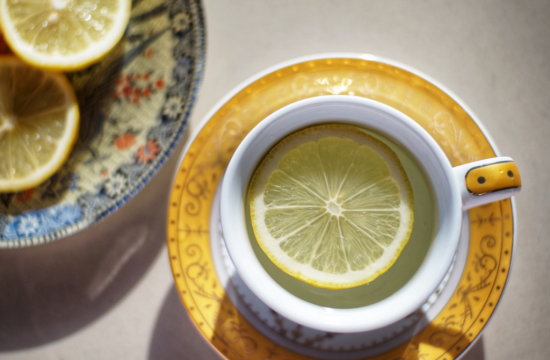This article explains Sushruta Samhita Sutrasthana Chapter 2 “Shishyopanayaniya Adhyaya ” – Initiation of the Pupil.


Shishyopanayaniya Adhyaya


We will now expound the chapter, called Shishyopanayaniya- initiation of the pupil; as revealed by the Venerable Dhanvantari.
Eligibility for initiation of students / disciples
The physician preceptor should initiate a person / student belonging to Brahmin, Kshatriya, Vaishya or any other good family. These persons should be endowed with the best of the below mentioned qualities –
- Ideal age (proper age suitable to undertake studies under a preceptor)
- Chastity
- Bravery
- Cleanliness
- Right conduct
- Politeness
- Enthusiasm / endurance
- Strength / prowess
- Intelligence
- Courage
- Memory
- Wisdom
- Ability to grasp the meaning of words and also to interpret them
Other qualities –
- His lips, tongue and the top (front) of the teeth should be thin
- His mouth, eyes and nose shall be straight
- His mind, speech and activities shall be pleasant
- He should be capable of withstanding hardships / strain
The teacher (physician) shall not teach anyone having qualities opposite to those mentioned above.
Read – Importance of Pushya Nakshatra in Ayurveda and Medical Astrology
Upanayana vidhi
Initiation ceremony
The Brahmana (preceptor) who is initiating the pupil should select an auspicious tithi – date (day of the month), karana (difference between the degrees of Sun and Mon divided by 6) – half of tithi, muhurta – a period of 48 minutes (a moment, 30th part of a day) and naksatra – star constellation.
Later he should select a place located in an auspicious direction which is clean and even. An altar of four arms (arm length) length and four arms in breadth shall be made and smeared with cow dung. On this he should spread Darbha grass. He should then worship Gods, Brahmans and physicians with flowers, laja (fried paddy), bhakta (cooked rice) and ratna (various kinds of precious gems).
Then lines should be drawn in upward direction on the altar (prepared ground) and holy water shall be sprinkled over it. Lord Brahma shall be installed (figure of Brahma shall be made) towards south direction and Agni (fire) shall be placed nearby i.e., build a fire altar and kindle the fire.
Following this, he shall use the twigs of Khadira, Palasa, Devadaru and Bilva trees or those of ksiri vrksas – i.e., four trees which yield milk sap (Nyagrodha, Udumbara, Asvattha and Madhuka) dipped in curds, honey and ghee. With these he shall perform the fire sacrifice in Darvihoma method while chanting Pranava (OM) and Mahavyahrti, offering oblations of ghee to each God and sages, uttering the word ‘Svaha’ for each. The disciples also should be instructed to perform the rituals in the same way (i.e., offer oblations of ghee to Gods and sages).
Notes: – Smearing the ground with cow dung and spreading darba grass are methods of sanctifying it. Wooden ladle was used to hold the ghee for offering it to the fire in the form of sacrifice. This was a traditional custom. One should chant the sacred hymns in praise of each God during fire sacrifice. This starts with Pranava (word OM) and ends with the word SVAHA, Mahavyahrti. Chanting of words such as Bhuh Bhuvah Svaha etc should be done according to the commentator of Sushruta Samhita, Master Dalhana.
Which preceptor can conduct Upanayana to whom?
Brihmana (priest, initiator) is eligible to initiate (make students) the pupils of all the three castes i.e., Brihmana, Kshatriya and Vaishya.
Rajanya / Kshatriya (priest of warrior caste or warrior) is eligible to initiate the pupils of only two castes i.e., Kshatriya and Vaishya.
Vaishya (priest of merchant caste) is eligible to initiate the pupils of only one (their) caste i.e., Vaishya.
Even a pupil belonging to a Shudra caste (lowest caste) if belonging to a good family (clan) and possessing good qualities (knowledge, behavior etc.) may also be initiated but without the chanting of sacred hymns and without upanayana i.e., initiating (swearing on oath) and then teaching (of the science) imparted, opine some authorities.
Read – Ayurveda In Puranas And Upa Puranas: Description of References
Pratijna Sveekara – Taking Oath
Next (after offering the oblations), going round the fire alter three times, and in the presence of fire, the preceptor should instruct the pupils as follows: –
“You should be here, avoiding (foregoing) desires, anger, greed, infatuation, pride, egoism, jealousy, harsh speech, making rumors about others, speaking untruth, laziness and acts of ill repute. You shall cut your (undesirable, which have grown excessively) nails and hairs of the scalp; keep yourself clean and wear ochre-colored robes. Essentially and always be truthful, maintain celibacy and keep the habit of prostrating (ancient custom of offering worship to gods, preceptors, elders etc). You shall go to only such places approved and permitted by me. You shall also use beds, seats, food and mode of study approved and permitted by me. Always indulge in such activities which are pleasing, likeable and beneficial to me. If you are indulged in doing anything else other than these it will be unrighteous on your part. Also, your knowledge will become futile and you will not earn any reputation anywhere.
On the other hand, if you are following all the instructions, rules and regulations and are living in accordance with them and behave properly and if I misunderstand you and act otherwise i.e., punish, not teach you properly etc, then I will acquire sin (it will be sin on my part) and my knowledge would become futile.”
Read – Sadvritta In Ayurveda – Code Of Conduct For Healthy Life
Duties of physician towards other people
The below mentioned kinds of people shall be looked after (taken care of) like your own kin and also should be treated with your own medicines –
- Twice born – Brahmanas
- The preceptor
- Poor persons
- A friend
- The ascetic
- The refugee
- The pious persons (sages, saints etc)
- The orphans
- Persons coming from distant place seeking help
The below mentioned kinds of people should not be cared for (should not be treated) –
- The hunter
- The bird catcher
- The unrighteous person
- The sinner
These acts would brighten (enhance) up your knowledge. You will also acquire friends, fame, virtue, wealth, pleasures etc.
Read – Ethics Of A Physician – Vaidya Vritti
Unsuitable time for study
Anadhyayana
Some verses here,
Studying of science should not be undertaken in the below mentioned times, places and conditions –
- The eighth day of dark fortnight,
- The last two days before the end of dark fortnight (14th and 15th day)
- The eighth, fourteenth and fifteenth days of the bright fortnight
- During sunrise and sunset
- Untimely lightning and thunder (occurring in seasons other than rainy season)
- During emergency / calamity of self (occurring in the body) and of one’s relatives, one’s country and the king
- At the burial ground,
- While riding (on animals)
- In sacrificial grounds (grounds or places wherein animals are sacrificed)
- During natural calamities like earthquakes etc and presence of malevolent stars and comets etc
- Days on which the Brahmanas do not study
- In conditions and days on which the person is unclean
Read – 18 Tips for a New Ayurvedic Student
Thus end the Second chapter by name Shishyopanayaniya in Sutra Sthana of Susruta Samhita.















